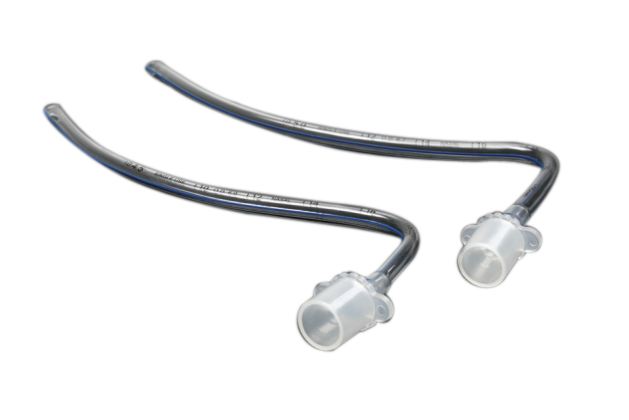
Nasal Preformed Tracheal Tube, Uncuffed
The nasal preformed tracheal tube is a type of airway device that is inserted through the nose and into the trachea (windpipe). It is used to maintain an open airway inEmergency situations where the patient is unable to breathe on their own. The nasal preformed tracheal tube is a simple, effective, life-saving device that everyone should know how to use.
| Ref. No.: | Size: | Qty. Cs: |
|---|---|---|
| NMR100430 | 3.0 | 100 |
| NMR100435 | 3.5 | 100 |
| NMR100440 | 4.0 | 100 |
| NMR100445 | 4.5 | 100 |
| NMR100450 | 5.0 | 100 |
| NMR100455 | 5.5 | 100 |
| NMR100460 | 6.0 | 100 |
| NMR100465 | 6.5 | 100 |
| NMR100470 | 7.0 | 100 |
| NMR100475 | 7.5 | 100 |
| NMR100480 | 8.0 | 100 |
| NMR100485 | 8.5 | 100 |
| NMR100490 | 9.0 | 100 |
| NMR100495 | 9.5 | 100 |
| NMR100410 | 10.0 | 100 |
The nasal preformed tracheal tube is a type of airway device that is inserted through the nose and into the trachea (windpipe). It is used to maintain an open airway inEmergency situations where the patient is unable to breathe on their own. The nasal preformed tracheal tube is a simple, effective, life-saving device that everyone should know how to use.
A nasal preformed tracheal tube (NPFTT) is a type of tracheal tube that is inserted through the nose and into the trachea (windpipe). NPFTTs are used when intubation (insertion of a tube into the trachea) is needed, but cannot be done through the mouth. This may be due to a patient's physical anatomy or because the mouth is unable to be accessed. NPFTTs are also sometimes used in emergency situations when time is of the essence.
NPFTTs come in a variety of sizes and can be either cuffed or uncuffed. Cuffed tubes have an inflatable cuff that helps to keep the tube in place and prevent it from being dislodged. Uncuffed tubes do not have this feature.
Insertion of an NPFTT can be challenging, as the anatomy of the nose can make it difficult to navigate. In addition, care must be taken to avoid damaging the delicate tissue of the nose and throat. Once in place, NPFTTs must be secured to prevent them from being dislodged.
The nasal preformed tracheal tube (NPFTT) is a device that is inserted into the nostrils and then passed down the trachea (windpipe) in order to provide a clear airway. It is commonly used in emergency situations when intubation (the placement of a breathing tube into the trachea) is required, but cannot be done in the traditional manner.
The NPFTT is uncuffed, which means that there is no inflatable balloon at the end of the tube. This makes it easier to insert, but it also means that it can sometimes slip out of place. In order to secure the NPFTT in place, a number of different techniques can be used. These include taping the tube to the patient's cheek, using an adhesive bandage, or placing a stylet (a stiff wire guide) through the tube to help keep it in place.
There are many advantages to using a nasal preformed tracheal tube (NPFTT), including the fact that it is less likely to cause trauma to the patient’s airway and surrounding tissues. Additionally, NPFTTs are easier to insert than other types of tracheal tubes and can be used in both awake and asleep patients. However, there are also some disadvantages to using NPFTTs, including the fact that they can cause epistaxis (nosebleeds) and can be difficult to remove if they become dislodged.
If you're scheduled for surgery to have a nasal preformed tracheal tube (NPTT) inserted, you may be wondering what to expect. Here's a look at what you can expect before, during, and after the procedure.
Before surgery, your doctor will give you a complete physical exam. This will help determine if you're healthy enough for surgery. You'll also need to have some tests, including a chest X-ray, to make sure your lungs are healthy.
During the procedure, which is typically done under general anesthesia, your surgeon will make an incision in your throat and insert the NPTT. The tube is then connected to a ventilator to help you breathe. You'll remain in the hospital for a few days while you recover from the surgery.
After you're released from the hospital, you'll need to take it easy for a few weeks. You may have some pain and discomfort around the incision site and your throat may be sore. Your doctor will give you pain medication to help with this. You'll also need to avoid strenuous activity and contact sports for at least six weeks after surgery.
If you or a loved one has been recently diagnosed with a condition that requires the use of a nasal preformed tracheal tube, you may be wondering how to best care for it. Here are a few tips to help you keep your nasal preformed tracheal tube clean and comfortable:
1. Wash your hands thoroughly before handling the tube. This will help to prevent infection.
2. Clean the tube daily with warm water and soap. Be sure to rinse it well afterwards.
3. If the tube gets wet, dry it off as soon as possible to prevent bacteria from growing.
4. Keep the tube free from debris by using a soft, damp cloth to wipe it down regularly.
5. Avoid using any type of lubricant on the tube as this can cause irritation.
6. If you notice any redness, swelling, or discharge around the tube, contact your doctor right away as this could be a sign of infection.